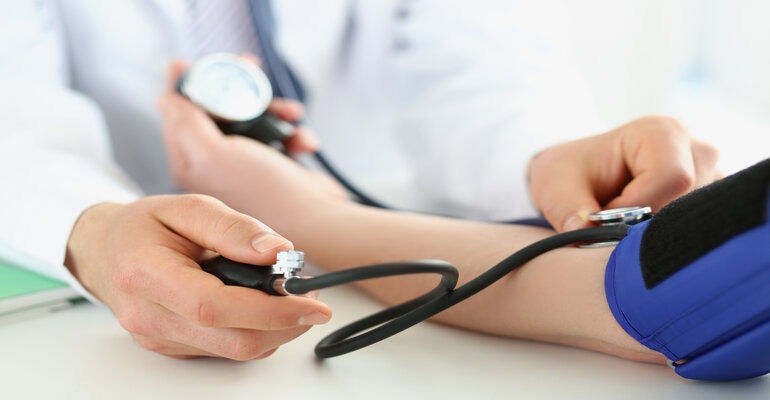Radiance Solo, Radiance Trio, and Radiance II trials used the Paradise Ultrasound Renal Denervation (uRDN) System to treat hypertension.

ReCor Medical and its parent company, Otsuka Medical Devices Co. recently announced that its primary endpoint results from the Radiance II pivotal trial has been published in the Journal of the American Medical Association (JAMA). Additionally, pooled analysis results from the combined primary efficacy endpoint and safety data from Radiance Solo, Radiance Trio, and Radiance II were concurrently published in JAMA Cardiology. All trials examined the use of the Paradise Ultrasound Renal Denervation (uRDN) System.
The uRDN system is a minimally invasive procedure to treat overactive nerves leading to the kidney. To do so, a small incision is made in the groin and a small flexible catheter is inserted, then placed in the artery supplying the kidney. Next, ultrasound energy is delivered to the tissue surrounding the artery for several seconds. Using ultrasound generates heat to decrease the over-activity of the nerves leading to the kidney. During the procedure, both kidneys are treated and then the device is removed.
Systemic sympathetic nerve activity plays a known role in causing hypertension. The renal sympathetic nervous system’s efferent network supplies the kidneys with noradrenergic sympathetic fibers and raises blood pressure by a direct effect on the kidney which promotes salt and water retention. An afferent network of sympathetic fibers returns signals to the central nervous system. It has been found that catheter-based interventional strategies that interrupt the renal sympathetic nervous system may provide better blood pressure control in patients with hypertension.
ReCor’s Radiance II trial was characterized as a randomized, sham-controlled US FDA IDE pivotal trial of the Paradise uRDN System to treat patients with uncontrolled hypertension. The study was conducted at more than 60 centers in eight countries and included 224 patients with uncontrolled hypertension randomized 2:1 to uRDN or sham. Patients, who were told to not take any antihypertensive medications unless specific BP criteria was exceeded, were followed for 2 months after uRDN and tested to obtain their mean reduction in daytime ambulatory systolic blood pressure.
At the two-month mark, the study found that patients treated with the uRDN system had a mean reduction in daytime ambulatory systolic blood pressure of -7.9 mmHg, compared to a -1.8 mmHg reduction in the sham arm. These results, according to ReCor, corresponded to a statistically significant and clinically relevant difference of -6.3 mmHg (p < 0.0001) between the two arms. The trial also achieved its primary safety composite outcome without reports of any major adverse events.
The Radiance pooled analysis concurrently published in JAMA Cardiology includes data from more than 500 patients that were randomized into three studies: Radiance-HTN Trio, Radiance-HTN Solo, and Radiance II. Trio studied patients with resistant hypertension, while Solo and Radiance II studied mild to moderate hypertension.
Pooled results showed an overall reduction in daytime ambulatory systolic blood pressure in the uRDN group of -8.5 mmHg with a difference between treatment and sham at two months of -5.9 mmHg (p < 0.0001). The data included in JAMA Cardiology also saw similarly positive blood pressure results in the 24-hour, nighttime, home, and office measures. Like the JAMA-published study, a favorable safety profile was consistently seen after uRDN treatment across the three studies.
“The results of the RADIANCE clinical trials are meaningful in that they solidify the role of the Paradise uRDN System as an adjunctive therapy for hypertension treatment, in addition to medications and lifestyle modification,” said study principal investigator Dr. Ajay Kirtane, professor of medicine at Columbia University, Vagelos College of Physicians and Surgeons, and New York-Presbyterian Hospital. “Having three consistent sham-controlled clinical trials demonstrating that the Paradise uRDN System can safely lower blood pressure across a range of patients is a very high bar to have met.”
About the Author(s)
You May Also Like




